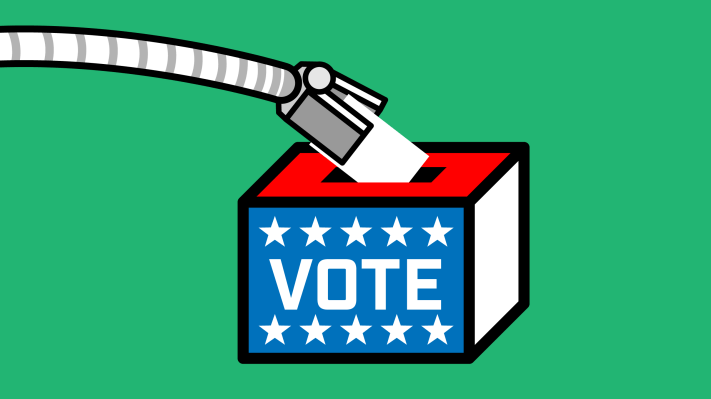When it comes to voting, we’ve come a long way from dropping pebbles into an amphora — but still not nearly far enough if the lack of confidence in our election systems is any indication. Microsoft is the first major tech company to take on this problem with a new platform it calls ElectionGuard that promises to make elections more secure and transparent — and yes, it’s free and open source.
Set to be made available this summer and piloted during the 2020 elections, ElectionGuard is not a complete voting machine, but rather a platform for handling voting data that can either empower existing systems or have new ones built on top of it. It’s part of the Defending Democracy Program and sister product to the similarly named NewsGuard and AccountGuard, which appeared last year.
The basic idea is to let voters track their votes securely and privately, while also allowing authorities to tabulate, store and, if necessary, audit them. As Microsoft puts it:
ElectionGuard provides a complete implementation of end-to-end verifiable elections. It is designed to
work with systems that use paper ballots, supplementing today’s tabulation process by providing a
means of public verification of the accuracy of reported results.
The platform would sit underneath existing voting systems, and when a voter casts their ballot, the data would be entered in the ordinary fashion in a state’s election systems, but also in ElectionGuard. The voter would then be given a tracking code that lets them see that their vote has been, say, recorded locally at the correct polling place, or perhaps that it has been sent on to state authorities for auditing.
Meanwhile, the ElectionGuard databases are securely recording all votes and tabulating them, a process that would happen in parallel with existing tabulation processes. In the case of an audit, random ballots could be selected from the database and compared with paper ballots, providing a quick way to see if, for example, a machine error in one district was throwing off results.
Importantly, this is all accomplished without Microsoft, or whoever is actually administrating the ElectionGuard system, knowing how any individual voted. This is done, the company explained, via a cryptographic technique known as homomorphic encryption. Basically, it allows a system to perform mathematical operations on encrypted data without decrypting it, making interference or exfiltration of that sensitive data next to impossible.
In this case, every vote is trackable only by the individual who made it, but the system is limited to adding up encrypted votes and reporting those sums.
Ultimately ElectionGuard aims to be a full voting solution, but one that can be customized and run on any number of actual devices — just like the rest of Microsoft’s software:
When it’s time to vote, ElectionGuard supports the use of standard tablets and PCs running a variety of operating systems as a ballot marking device, which can be used to create an interface that looks and feels like modern applications people interact with every day on their phones and tablets.
Here’s hoping ease of deployment and a modern code base will end for good the reign of aged and insecure voting machines that can be hacked with a USB key. Microsoft is also working with election tech suppliers to bring ElectionGuard into existing product lines or build new ones.
The company worked with Galois to develop ElectionGuard, a company that has been working on election security for years and recently received a $10 million grant from DARPA to pursue secure voting hardware.
It will no doubt take some tinkering, but it’s good to see a major tech company making a credible and comprehensive bid to fix an elections process that is technologically compromised on multiple fronts. Tech can’t fix politics, but it can sure build a better way to vote.

